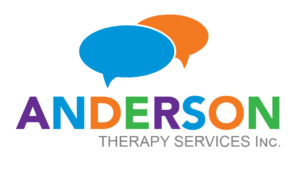5 Ways to Target Speech, Language and Literacy Goals using The Very Hungry Caterpillar
The Very Hungry Caterpillar by Eric Carle is one of our favourite books here at ATS. Eric Carle, like many children’s authors, has built in some fantastic opportunities for language learning. Here are 5 ideas for reading this classic book with your child:
1. Go on a Treasure Hunt
It’s great fun to become detectives as you read. To help your child develop phonological awareness skills, have them listen out for words beginning or ending with a particular sound. For example, read the story out loud listening out for ‘l’ sounds. When you read the first page “In the light of the moon, a little egg lay on a leaf”, exaggerate the ‘l’ sound to make it really clear. As they get better at listening out for sounds, you can make it less obvious.
If your child(ren) have some emerging literacy skills, have them find the letter that makes the sound as part of the hunt!
2. Practice Story-Telling
This is a great book for working on early sequencing skills. Help your child to retell parts of the story using vocabulary such as “first”, “next” and “then”. The life cycle of the caterpillar is a great one for this (eg. first he was an egg, next he was a _______). Use the pictures in the book as a visual prompt if they’re unsure how to answer. What the caterpillar ate is also great for retelling (eg. what did he eat first?). Again, don’t hesitate to use the pictures, and you can always give two choices if they’re stuck (eg. “did he eat the apple or the pear first?”)
3. What else belongs?
This book lends itself really nicely to talking about categories. Ask your kids what category apples, pears, plums, strawberries and oranges belong to. If they don’t know what a category is, explain that they are things that go together because they are similar (almost the same). Once you’ve had the discussion that all of these foods are fruit, you can talk about why (eg. they grow on a tree, they have seeds). See if your kids are can of anything else that belongs to the fruit category. Once they have understood the idea of categories, see if your child can work out what category a caterpillar belongs to. Can they think of anything else that belongs in that category?
4. Practice your “tricky” sounds
Many speech sounds can be targeted in reading this book. Here are some examples: /v/ (very), /k/ (caterpillar), /st/ (he was still hungry). Just exaggerating any sounds your kids find “tricky” as you read is helpful. You can also leave emphatic pauses to allow your kids to fill in the words practicing their good sounds.
5. Work on WH-questions
Finally, this book is great for targeting who, where, when and why questions. You can target just one type of question, or stretch your child by asking a variety or questions. For example, who ate the apple? Why did the caterpillar eat the green leaf? What did the caterpillar turn into?
Above all else, make sure you have FUN when reading this book. Remember that the more enthusiasm you put in, the more your kids will love reading it with you! Happy Reading!
Interested in Learning More about Child Literacy Development?
Literacy plays a significant role within speech and language development as children develop literacy skills right from birth. If you are interested in learning more about strategies for incorporating literacy skills at home, please contact our team of speech-language pathologists and communicative disorders assistants today. Our team would be happy to answer any questions or discuss any concerns you may have regarding your child’s speech, language or literacy development. We look forward to hearing from you.






